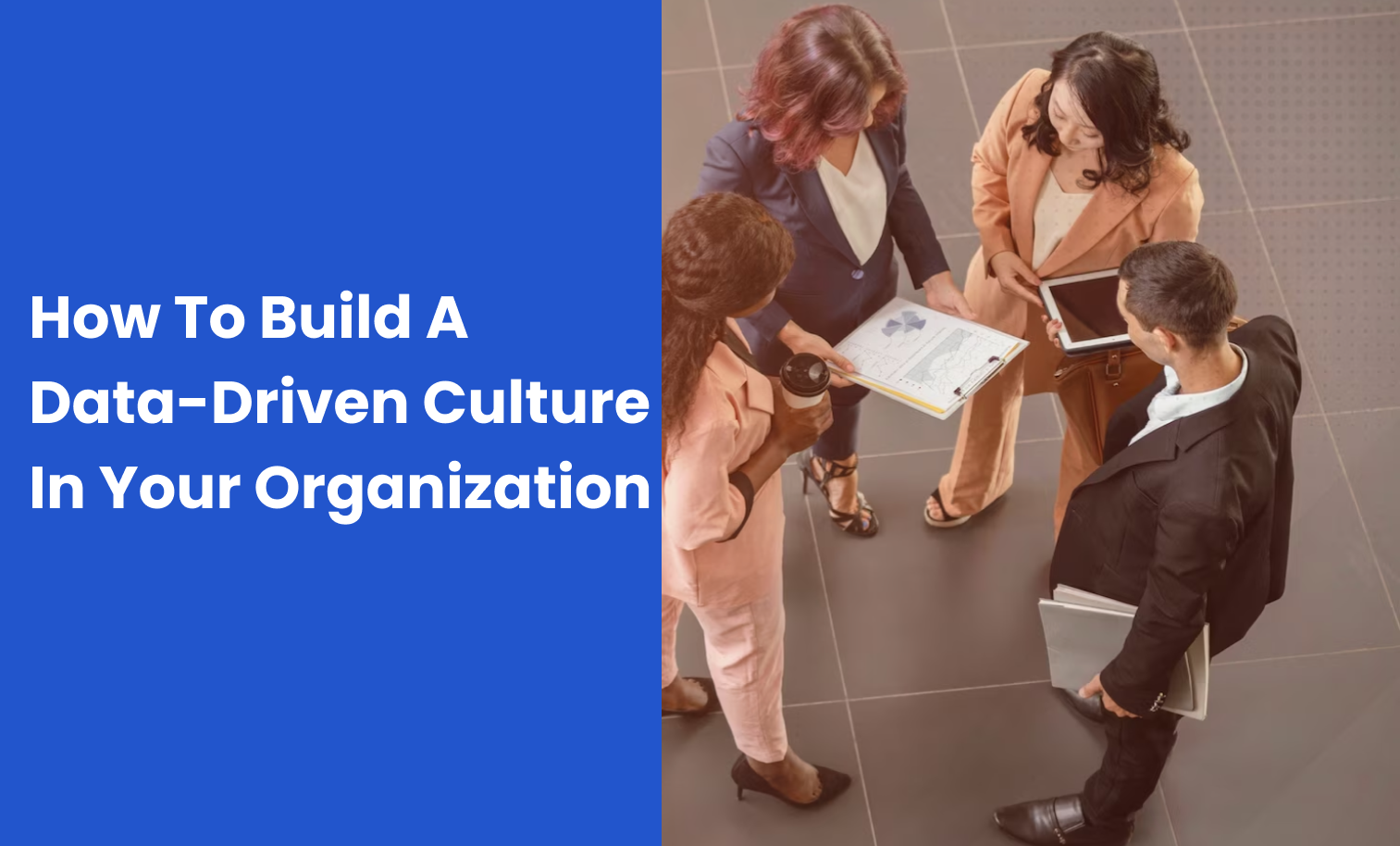How to Build a Data-Driven Culture in Your Organization

Building a data-driven culture within your organization is essential for making informed decisions, improving efficiency, and staying competitive in today's data-rich world. Here are steps you can follow along with relevant links to helpful resources:
-
Define Your Objectives and Vision:
- Start by understanding why you want to become data-driven and set clear objectives. Determine how data can help you achieve your goals.
- Harvard Business Review - Building a Data-Driven Culture
-
Leadership Buy-In:
- Secure support from senior leadership. Without their endorsement, it's challenging to foster a data-driven culture.
- Forbes - Why Leadership Buy-In is Key to a Data-Driven Culture
-
Educate Your Team:
- Invest in data literacy training for employees at all levels.
- DataCamp - Data Literacy: The Most Overlooked Skill in Your Organization
-
Data Collection and Management:
- Ensure data is collected, stored, and managed properly. Implement data governance practices.
- IBM - Data Governance Guide
-
Choose the Right Tools:
- Invest in analytics tools and software that suit your organization's needs.
- Gartner - Magic Quadrant for Analytics and Business Intelligence Platforms
-
Create a Data-Driven Culture:
- Encourage data-driven decision-making at all levels. Reward and recognize those who excel in this area.
- Harvard Business Review - How to Build a Data-Driven Business Culture
-
Data Sharing and Collaboration:
- Promote collaboration among departments and teams to share insights and data-driven discoveries.
- Harvard Business Review - To Get More Value from Your Data, Cultivate a Data Sharing Culture
-
Continuous Improvement:
- Establish feedback loops and regularly review data processes and decisions to refine them.
- Towards Data Science - 10 Ways to Improve Your Data Analytics Strategy
-
Security and Compliance:
- Ensure data security and compliance with relevant regulations, such as GDPR or HIPAA.
- GDPR.eu - General Data Protection Regulation (GDPR) Guide
-
Measure and Communicate Success:
- Set KPIs and metrics to track the impact of your data-driven initiatives, and communicate the results to the organization.
- CIO - 10 KPIs to Drive Your Data-Driven Marketing Campaign
-
Adapt and Evolve:
- Stay updated with emerging technologies and data trends to adapt your data strategy accordingly.
- Data Science Central - Data Science and Machine Learning Blogs
-
Case Studies and Success Stories:
- Share real-world examples of how data-driven decisions have positively impacted your organization.
- Data and Analytics Case Studies
-
Community and Networking:
- Join data-related communities, attend conferences, and network with peers to gain insights and knowledge.
- Data Science Community - Kaggle
| Aspect | Description | Importance | Key Actions |
|---|---|---|---|
| Objectives and Vision | Define why you want to be data-driven and set goals. | High | - Establish clear data-driven objectives and communicate them. - Align with the organization's mission. |
| Leadership Buy-In | Secure support from senior leadership. | High | - Obtain leadership endorsement and involvement in data initiatives. - Show ROI to gain continued support. |
| Education and Training | Invest in data literacy for all employees. | High | - Provide data training programs and resources. - Make data skills a part of hiring criteria. |
| Data Collection and Management | Properly collect, store, and govern data. | High | - Implement data governance policies and practices. - Ensure data quality and security. |
| Tools and Technology | Choose the right analytics tools and software. | Medium to High | - Invest in tools that align with organizational needs and goals. - Keep technology up to date. |
| Data-Driven Culture Promotion | Encourage data-driven decision-making. | High | - Reward and recognize data-driven achievements. - Foster an environment that values data insights. |
| Data Sharing and Collaboration | Promote cross-functional sharing of data. | High | - Break down silos and encourage collaboration. - Create channels for sharing insights and best practices. |
| Continuous Improvement | Establish feedback loops for process refinement. | Medium to High | - Regularly review and optimize data processes. - Adapt to changing data and business needs. |
| Security and Compliance | Ensure data security and regulatory compliance. | High | - Follow data security best practices. - Stay compliant with relevant regulations (e.g., GDPR, HIPAA). |
| Measurement of Success | Define KPIs and communicate results. | Medium to High | - Set measurable KPIs for data-driven initiatives. - Share successes and learnings with the organization. |
| Adapt and Evolve | Stay updated with data trends and technologies. | Medium to High | - Continuously learn about emerging data technologies. - Adapt strategies as the data landscape evolves. |
| Case Studies and Success Stories | Share examples of data-driven impact. | Medium | - Highlight real-world success stories and lessons learned. - Inspire others with tangible results. |
| Community and Networking | Engage with data-related communities and peers. | Medium | - Join data science forums, conferences, and networking events. - Share and gain insights from others. |
-1.png?width=2600&height=450&name=RetailMetrixLogo%20(1)-1.png)
